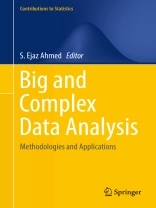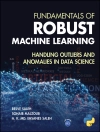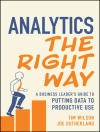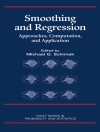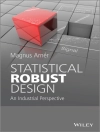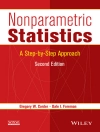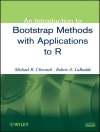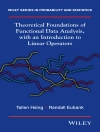This volume conveys some of the surprises, puzzles and success stories in high-dimensional and complex data analysis and related fields. Its peer-reviewed contributions showcase recent advances in variable selection, estimation and prediction strategies for a host of useful models, as well as essential new developments in the field.
The continued and rapid advancement of modern technology now allows scientists to collect data of increasingly unprecedented size and complexity. Examples include epigenomic data, genomic data, proteomic data, high-resolution image data, high-frequency financial data, functional and longitudinal data, and network data. Simultaneous variable selection and estimation is one of the key statistical problems involved in analyzing such big and complex data.
The purpose of this book is to stimulate research and foster interaction between researchers in the area of high-dimensional data analysis. More concretely, its goals are to: 1) highlight and expand the breadth of existing methods in big data and high-dimensional data analysis and their potential for the advancement of both the mathematical and statistical sciences; 2) identify important directions for future research in the theory of regularization methods, in algorithmic development, and in methodologies for different application areas; and 3) facilitate collaboration between theoretical and subject-specific researchers.
Inhoudsopgave
Preface.- Introduction.- Unsupervised Bump Hunting Using Principal Components.- Statistical Process Control Charts as a Tool for Analyzing Big Data.- Empirical Likelihood Test for High Dimensional Generalized Linear Models.- Identifying gene-environment interactions associated with prognosis using penalized quantile regression.- A Computationally Efficient Approach for Modeling Complex and Big Survival Data.- Regularization after marginal learning for ultra-high dimensional regression models.- Tests of concentration for low-dimensional and high-dimensional directional data.- Random Projections For Large-Scale Regression.- How Different are Estimated Genetic Networks of Cancer Subtypes?.- Analysis of correlated data with error-prone response under generalized linear mixed models.- High-Dimensional Classification for Brain Decoding.- Optimal shrinkage estimation in heteroscedastic hierarchical linear models.- Bias-reduced moment estimators of Population Spectral Distribution and their applications.- Testing in the Presence of Nuisance Parameters: Some Comments on Tests Post-Model-Selection and Random Critical Values.- A Mixture of Variance-Gamma Factor Analyzers.- Fast Community Detection in Complex Networks with a K-Depths Classifier.
Over de auteur
Dr. S. Ejaz Ahmed is Dean of the Faculty of Mathematics and Science and a Professor of Statistics at Brock University. Before joining Brock, he was a professor and head of the Mathematics & Statistics Department at the University of Windsor and University of Regina. Prior to that, he was an assistant professor at the University of Western Ontario. He is an elected fellow of the American Statistical Association and holds many adjunct professorship positions. His areas of expertise include big data analysis, statistical inference, and shrinkage estimation. He has more than 150 published articles in scientific journals and has reviewed more than 100 books. Further, he has written several books, edited and co-edited several volumes and special issues of scientific journals. He has supervised numerous Ph D and master’s students and organized several workshops/conferences and many invited sessions. Dr. Ahmed serves on the editorial board of many statistical journals and asa review editor for Technometrics. He served as a Board of Director and Chairman of the Education Committee of the Statistical Society of Canada, and as a VP communication for ISBIS. Recently, he served as a member of an Evaluation Group, Discovery Grants and the Grant Selection Committee, Natural Sciences and Engineering Research Council of Canada.
